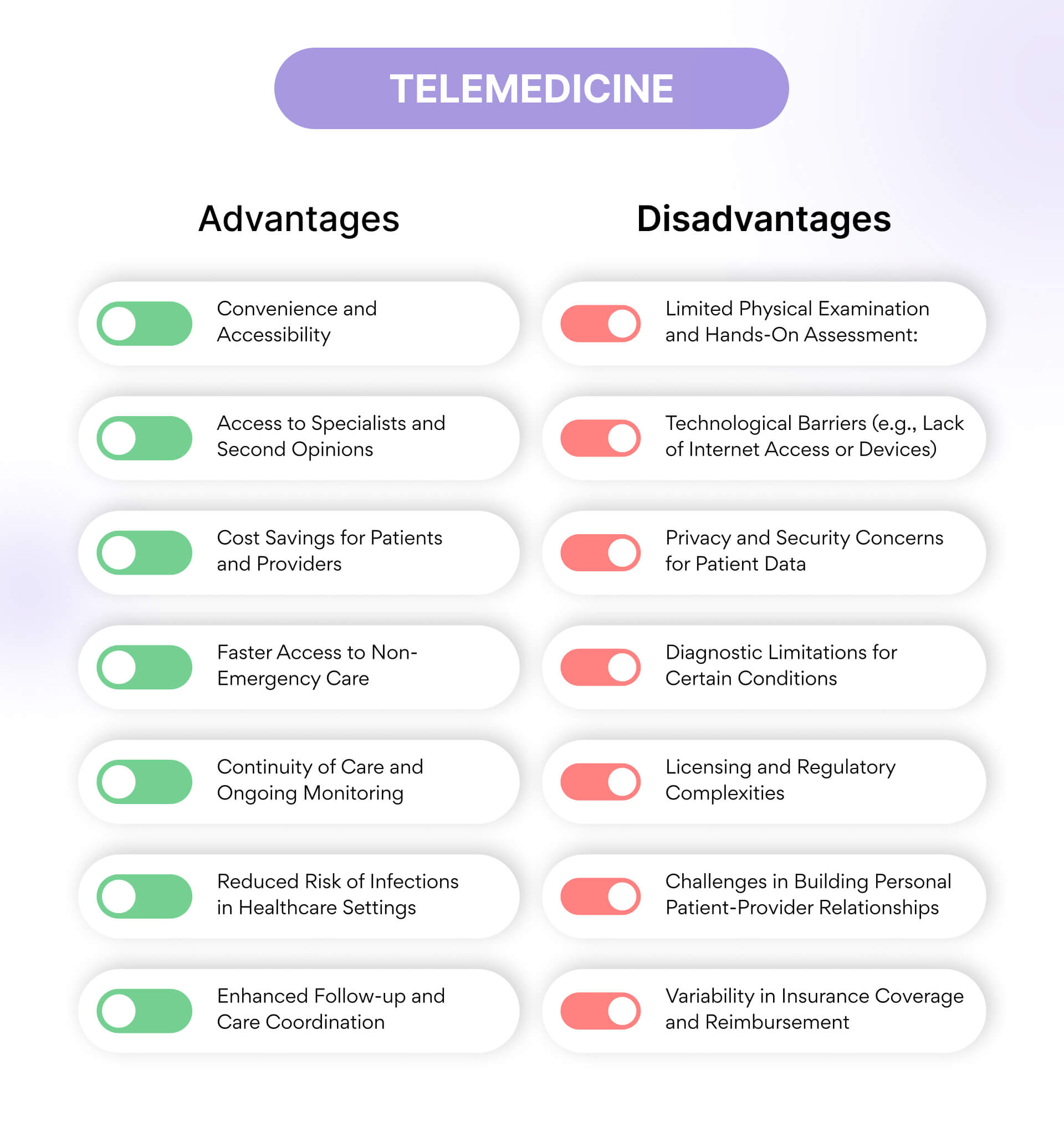
December 9 2023
8 min read

Aug
Today, in our fast-paced world where convenience and technology meet, telemedicine is making a big difference in healthcare. It lets patients get medical care without going to a doctor’s office. But like any other technology, telemedicine comes with its own set of advantages and disadvantages.
Telemedicine is all about convenience. With a simple internet connection and a device like a smartphone or computer, patients can access healthcare services from the comfort of their homes.
This eliminates the need for time-consuming commutes, long waits in crowded waiting rooms, and scheduling challenges. Telemedicine makes healthcare accessible to anyone, regardless of their geographical location.

Telemedicine breaks down geographical barriers, allowing patients to consult with specialists and seek second opinions without the constraints of location.
Whether you need the expertise of a renowned cardiologist or a neurologist, telemedicine enables you to access specialized care without traveling long distances.
Telemedicine is a win-win for both patients and healthcare providers. Patients can save money on transportation costs, parking fees, and taking time off work to attend appointments.
On the other hand, healthcare providers can reduce administrative overhead and streamline their operations, ultimately leading to cost savings for the entire healthcare system.

When you have a non-emergency medical concern, waiting weeks for an in-person appointment can be frustrating. Telemedicine offers a solution by providing faster access to healthcare professionals.
You can schedule a virtual consultation at a time that suits you, often within hours, and get the medical advice you need without delay.
Telemedicine supports the continuity of care by allowing patients to maintain ongoing relationships with their healthcare providers. This is especially valuable for individuals with chronic conditions that require regular monitoring and adjustments to their treatment plans.
Remote monitoring devices can transmit vital signs data, ensuring that healthcare providers stay informed and can make timely decisions.

In an era of global pandemics and infectious diseases, minimizing the risk of exposure to pathogens in healthcare settings is critical.
Telemedicine can significantly reduce the need for in-person visits to hospitals and clinics, protecting both patients and healthcare workers from the spread of contagious illnesses.
Telemedicine makes follow-up appointments more convenient and accessible. Patients are more likely to adhere to their treatment plans when they can easily connect with their healthcare providers for check-ins and discussions.
Additionally, telemedicine supports care coordination among multiple providers, ensuring that your healthcare team is on the same page regarding your treatment.
Telemedicine has its limitations when it comes to physically examining patients. Certain medical conditions and diagnostic procedures require in-person assessments, where healthcare professionals can perform physical exams and hands-on evaluations.
Telemedicine may not be suitable for cases where a tactile or visual examination is crucial for accurate diagnosis.

While telemedicine is highly accessible for many, not everyone has the necessary technology or reliable internet access. Some patients, especially in rural or underserved areas, may face barriers due to the lack of suitable devices or stable internet connections.
This digital divide can exclude certain populations from the benefits of telemedicine.
The transmission of sensitive medical information over digital networks raises concerns about privacy and security. Ensuring the confidentiality of patient data is paramount, and healthcare providers and technology companies must implement robust security measures to protect against data breaches and unauthorized access.

Telemedicine has its limitations in diagnosing certain medical conditions that require advanced diagnostic equipment or physical examinations.
Conditions that involve complex medical imaging or procedures, such as X-rays or biopsies, may necessitate in-person evaluations.
Telemedicine often involves interactions across state or international boundaries, which can lead to complex licensing and regulatory challenges.
Healthcare providers must navigate a maze of regulations to ensure compliance with varying legal requirements, which can be cumbersome and time-consuming.

Building a personal connection and rapport between patients and healthcare providers can be challenging in a remote setting. The lack of face-to-face interactions may impact the patient-provider relationship, which is essential for trust, empathy, and effective healthcare delivery.
Insurance coverage for telemedicine services can vary widely. While many insurance plans now cover telehealth visits, the extent of coverage and reimbursement rates can differ.
Patients should be aware of their insurance policies and potential out-of-pocket expenses when using telemedicine.


December 9 2023
8 min read

December 4 2023
8 min read

November 30 2023
8 min read

November 22 2023
8 min read